JOHN McNAMEE TALKS TO A “VINDI BOY” ABOUT THE SHIP THAT FORGED HIS LIFE
The 50-strong convoy headed by the US-built but British-manned tanker SS Ohio included 14 merchant navy ships trying to run the blockade of Malta at the height of the war in the Mediterranean.
It was August 1942. The crucially important convoy was escorted by two Allied battleships, five aircraft carriers, seven cruisers, 22 destroyers and seven submarines.
The proudly defiant nation of Malta was on its knees as German aircraft and surface vessels had placed it under siege and cut off all supplies.
There was no fuel to get the Spitfires into the air and virtually no food for the beleaguered population.
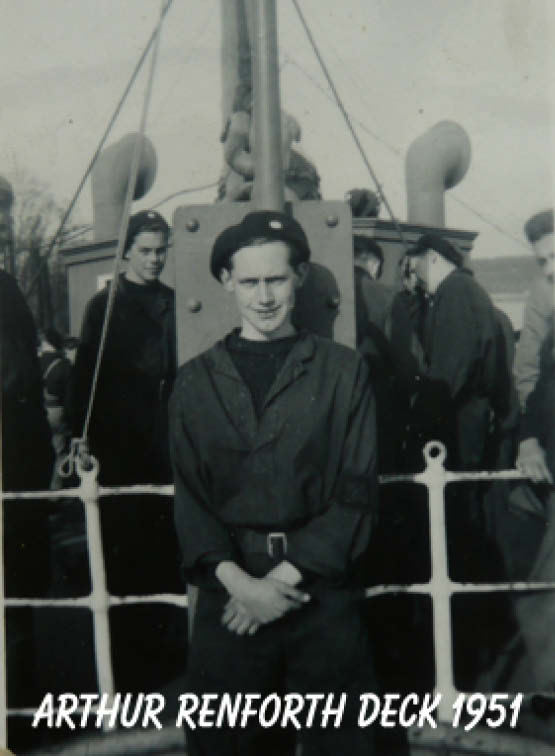
Arthur Renforth on board the TS Vindicatrix during his training time in 1951
Malta had been the vital base for Allied raids on the enemy supply route to German and Italian troops in North Africa.
The attempt to run the 50 ships past AXIS bombers, E-boats, minefields and submarines has gone down in military history as one of the most important British strategic victories of the Second World War.[
More than 500 Merchant and Royal Navy sailors and airmen were killed and only five of the 14 merchant ships reached Malta’s Grand Harbour. The arrival of the remains of the convoy did not break the siege but offered some respite to the gallant Maltese.
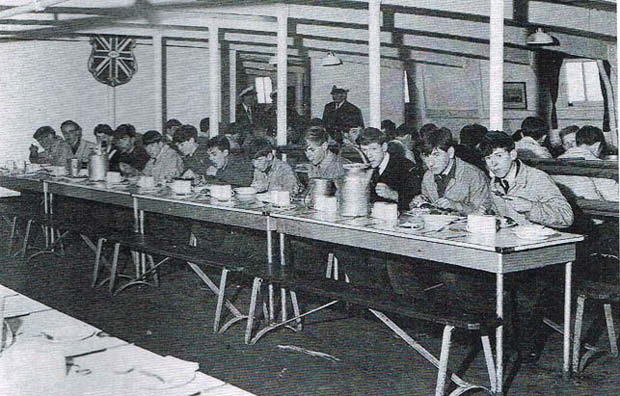
Vindi boys tucking into the ‘inedible’ food on board the training ship
The majority of those Merchant Navy seamen killed were what became known as the Vindi Boys.
They had done their basic training on a former hulk called the TS Vindicatrix which was moored in the early stages of the war in London Docks but because of the Luftwaffe raids on the capital it was towed down to the river Severn at Sharpness in Gloucestershire.
There it remained right throughout the war until it was finally decommissioned as a training ship in 1966 and towed to the ships wreckers yards in Monmouthshire.
It was estimated that up to 70,000 British boys did their basic merchant navy training on the Vindicatrix as volunteers from 1939 to 1966..
Many of course died during the Second World War but many who “learnt the ropes” on board the old three-masted, square rigged and steel steam ship in the years after the war still survive today to remember life aboard.
“Not many of the wartime blokes are still around of course but only recently we lost one of our members aged in his 90s who had served on that convoy to Malta,” local Vindi Boy Arthur Renforth told Go55s.
“I remember him telling me that the convoy and particularly the merchant ships were under constant barrage from German and Italian motor-torpedo boats, U-boats and bombers.
“He had been on the Ohio and he remembers it copping a direct hit which blew him off the deck into the sea. Luckily he survived and lived to a grand old age,” Arthur said.
“Many of them in our association had a chest full of medals and featured in many incidents of unbelievable bravery and they were the lucky ones. In the Merchant Navy during the war they lost one in six men as compared to one in 33 for the combined armed services,” he said.
Arthur, 82, who was born in Newcastle-on-Tyne, in northern England, joined the TS Vindicatrix as a 16-year-old in 1951. His father worked in the Ford factory at Dagenham in Essex and Arthur started his working life as a picture theatre projectionist.
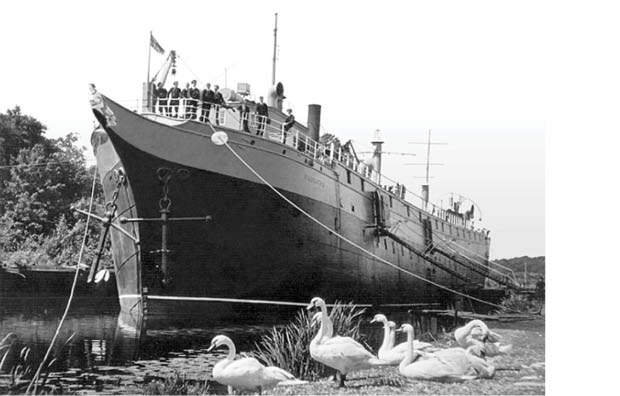
The former hulk, TS Vindicatrix at her mooring at Sharpness on the River Severn
“But I craved the life of adventure and when I heard of the old Vindi down at Sharpness I thought I’d sign up, join the Merchant Navy and see the world.
“Well, I certainly did that and my first ship was the English Star, a Fast Refrigerated Cargo vessel which plied between the UK and Australia via South Africa.
“I had adventures alright, and I still look back today and remember with fondness the training I received on the Vindi. We hated the discipline, the horrible food and the cockroaches but deep down we knew it was a great time in our lives.”
Just a fond memory now for the dwindling few thousand young men who underwent their training on board, the Vindicatrix was built in Glasgow in the late 1890s and sailed under the Red Ensign for the first 17 years of her life. In 1910 she was sold to the Germans who turned her into a hulk and later into a accommodation ship for U-boat officers in the First World War.
After the war she came back into British hands and in 1939 began her life as a training ship manned by experienced Merchant Navy officers.
“We learnt a lot of skills of course, ropework, boat handling, signalling, navigation and basic stuff such as mess work.
“Sometimes it was hard going with severe discipline imposed by the instructors who had been through the horrors of war and they took it out on us. I suppose we deserved some of it.
“There were quite a few characters as well including the nurse we called Codeine Annie who was famous for handing out codeine tablets for just about every ailment. She was also accused by the boys as always using the same needle for injections but claimed that she sharpened it every morning,” Arthur laughed.
“You either ate the virtually inedible food or you went hungry..there was always someone else who’d eat your share. Some of the boys couldn’t handle it and went over the wall and headed home but it really made men out of boys and we’re much better off for it all,” he said.
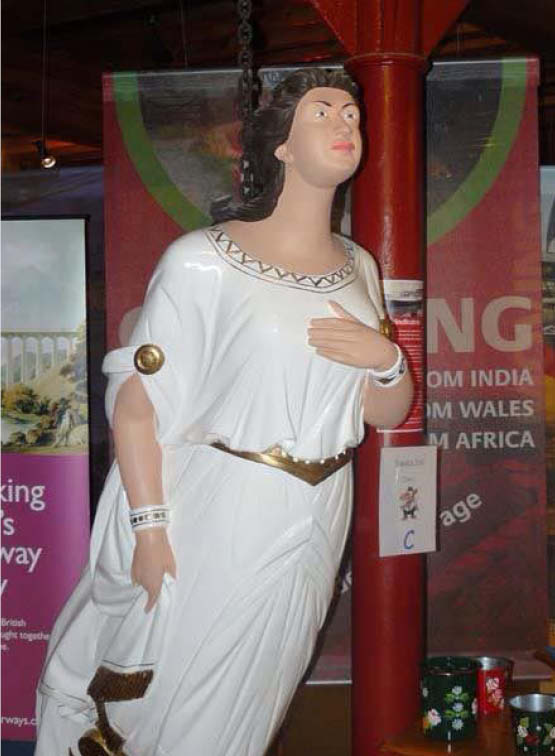
The figurehead of the Vindi known as Mrs Drysdale after the wife of one of the ship’s directors.
Arthur is the current president of the Queensland branch of the T.S. Vindicatrix Association which was formed in 1996. Other similar associations are based in the UK, South Africa, Canada and New Zealand. There used to be annual pilgrimages to reunions in Sharpness every August but Arthur admits most of his members are too old to travel that far these days.
He says there are about two or three hundred Vindi Boys in Australia, most of them former British citizens who emigrated here over the years.
Arthur has been in Australia since the late 1950s after he “jumped ship” in Melbourne and later moved to Sydney where he joined the RAAF in 1958 and stayed until 1970 based mainly at Richmond and Williamtown airforce bases.
“I was trained as an instrument fitter and I could rip out all the cockpit instruments, bomb sights, oxygen and navigation equipment, strip them down, and put them all back together in such planes as Neptune bombers, Mirages and Sabres,” he said.
“But after all those years I became bored and bought a couple of community newspapers, sold them, bought a couple of Italian restaurants, sold them too and I currently run a Body Painting Magazine, just for variety,” he says.
“I must say at my age I don’t crave the life of adventure anymore as I’ve got six grandchildren, four boys and two girls, and two great-grandchildren which keep me occupied.
“And I must say I’ve never regretted one moment of my days on the Vindi and the great life I was able to enjoy because of all that training,” Arthur said.
Main pic Local Vindi boy Arthur Renforth, President of the Queensland TS Vindicatrix Association at the office of one of his former publications


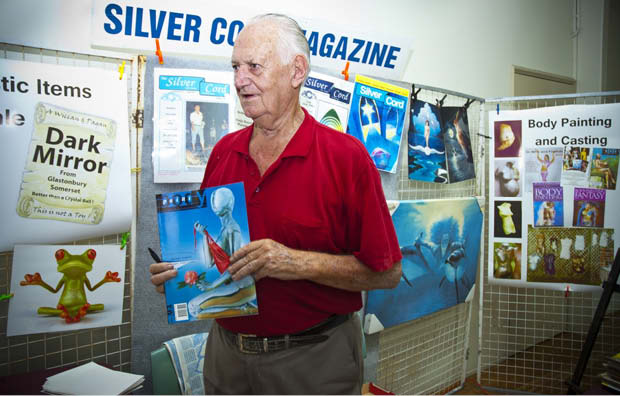


1 Comment
my name is nigel hughes I trained on the vindycatrick in 1966 remember it very well I am 71 now my first ship was the darrow we sailed south America Argentina to pick beef and corned effects im retired now